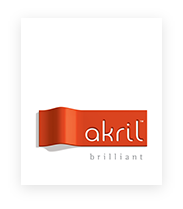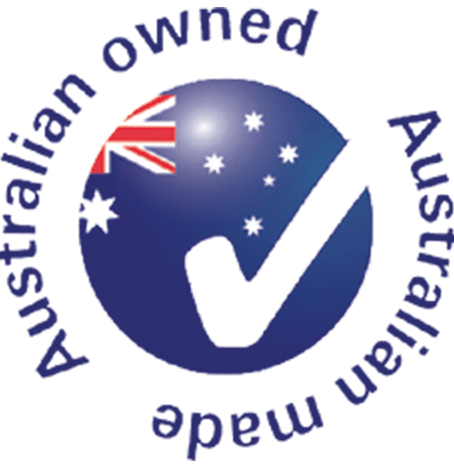1. What do I use to stick my Akril Polymer panel to the wall?
Neutral cure clear silicone.
2. What do I cut my Akril Polymer panel with?
Circular saw fitted with blade consisting of minimum 40 teeth – suitable for cutting Acrylic or Aluminium.
3. Can Akril Polymer be installed directly over tiles?
Yes, but ensure they are clean. High gloss tiles may require sanding prior to installation. Be aware that there may be slight discolouration when installing a light colour Akril Polymer over dark tiles.
4. Do you cut to size?
Akril Polymer is only available in the sizes on our website – it can easily be cut to size on site.
5. Can I backlight Akril Polymer?
No, you cannot backlight Akril Polymer.
6. Can Akril Polymer be used as a whiteboard?
No, Akril Polymer is not recommended as a whiteboard. Whiteboard marker may be removed in some instances but not all. If a whiteboard marker or permanent marker is used methylated spirits will remove the ink from Akril Polymer without damage.
7. Can Akril Polymer be used behind cooktops?
Akril Polymer can be used in any vertical situation where coming into contact with direct heat isn’t a consideration. Heat sources greater than 80° Celsius can cause distortion and while Akril Polymer has a higher heat resistance than most polymers; it is generally not suitable for applications directly behind gas cooktops. Akril has a range of colour matched glass and stainless steel filler panels for use behind gas cooktops.
8. How is Akril Polymer environmentally friendly?
Akril Polymer requires much less energy to manufacture than equivalent glass products.
9. What happens when Akril Polymers are scratched?
Most surface scratches can simply be polished out of Akril Polymers. Deeper scratches can be sanded back and then cut and polished to return the surface to its original lustre and finish. We recommend the use of the Akril Polish Kit to repair any scratches.
10. Are there any cleaning products I should avoid
Yes, there are some chemicals found in cleaning products that may affect Akril Polymers. These include – Acetone, Ethyl acetate, Amyl alcohol, Amyl acetate, Benzene/toluene/xylene, Butyl alcohol, Cellosolve, Chloroform, Cresols/phenols, Chlorinated solvents/ halogenated solvents, Methyl alcohol, Sulphuric acid (10%)/ dilute acids, MEK methyl ethyl ketone (PVC pipe glue).
11. Can Akril Polymers be used outside?
While Akril Polymers have a 10-year UV warranty, it is not recommended for exterior applications in which it is directly exposed to the weather. It is suitable for covered and protected areas such as undercover patios, barbecues and so on.
12. Are there any special tools or skills required when working with Akril Polymer on site?
No, Akril Polymer is lightweight, durable and can be cut, shaped and polished on site. When worked with correctly Akril Polymer will not chip, crack or splinter and only requires standard tools. Following the simple process means variations to design can be easily accommodated, most of the time with standard techniques and skills. Exact specifications for sanding and adhering can be found in the Installation section.
13. Are special adhesives required?
The same clear neutral-cure silicone used on mirrors and glass can be used on Akril. Acetic silicone is not recommended as it is very likely to bleed through and damage the finished panel.
14. What colours and designs are available?
There are 2 ranges of Akril Polymer: the Standard range and the Select range. The standard range has 15 solid colours and 5 metallic colours and the Select range has 25 designs.
15. Is Akril Polymer cost effective when compared with painted glass?
About 40% more cost effective in price – but more so in terms of reduced lead times, ready availability and ease of use which means there is more project control on site than with a glass alternative.
16. What sizes and thicknesses are available?
Akril Polymer is available in 4mm and 6mm thicknesses in smaller sheet sizes and 6mm in larger sizes. 4mm is recommended for cupboard doors and inserts while 6mm is recommended for larger applications. For a full list of panel sizes and thicknesses, visit Akril range.
17. Is there a warranty on Akril Polymer?
Yes, there’s a 10-year indoor UV warranty on Akril Polymer.
18. Will abrasives scratch Akril Polymer?
Yes, if applied vigorously. The Akril Polish Kit will easily restore Akril Polymers original gloss surface.
19. What do I glue my tile tray or shower base down with?
Sicaflex 11FC or it can be bedded into concreate. Please refer to the installation instructions.
20. How do I cut AliPro?
Alipro is cut a with a finetooth Aluminum Blade. Please refer to the instructions before cutting for correct saw speed and blade requirments.
21. How do I adhere AliPro?
AliPro is adhered with Neutral Cure Silicone.
22. Can AliPro go behind- gas cooktop?
Yes, AliPro can go behind Gas cooktops.
1. What do I use to stick my Akril Polymer panel to the wall?
2. What do I cut my Akril Polymer panel with?
3. Can Akril Polymer be installed directly over tiles?
Yes, but ensure they are clean. High gloss tiles may require sanding prior to installation. Be aware that there may be slight discolouration when installing a light colour Akril Polymer over dark tiles.
4. Do you cut to size?
Akril Polymer is only available in the sizes on our website – it can easily be cut to size on site.
5. Can I backlight Akril Polymer?
No, you cannot backlight Akril Polymer.
6. Can Akril Polymer be used as a whiteboard?
No, Akril Polymer is not recommended as a whiteboard. Whiteboard marker may be removed in some instances but not all. If a whiteboard marker or permanent marker is used methylated spirits will remove the ink from Akril Polymer without damage.
7. Can Akril Polymer be used behind cooktops?
Akril Polymer can be used in any vertical situation where coming into contact with direct heat isn’t a consideration. Heat sources greater than 80° Celsius can cause distortion and while Akril Polymer has a higher heat resistance than most polymers; it is generally not suitable for applications directly behind gas cooktops. Akril has a range of colour matched glass and stainless steel filler panels for use behind gas cooktops.
8. How is Akril Polymer environmentally friendly?
Akril Polymer requires much less energy to manufacture than equivalent glass products.
9. What happens when Akril Polymers are scratched?
Most surface scratches can simply be polished out of Akril Polymers. Deeper scratches can be sanded back and then cut and polished to return the surface to its original lustre and finish. We recommend the use of the Akril Polish Kit to repair any scratches.
10. Are there any cleaning products I should avoid
Yes, there are some chemicals found in cleaning products that may affect Akril Polymers. These include – Acetone, Ethyl acetate, Amyl alcohol, Amyl acetate, Benzene/toluene/xylene, Butyl alcohol, Cellosolve, Chloroform, Cresols/phenols, Chlorinated solvents/ halogenated solvents, Methyl alcohol, Sulphuric acid (10%)/ dilute acids, MEK methyl ethyl ketone (PVC pipe glue).
11. Can Akril Polymers be used outside?
While Akril Polymers have a 10-year UV warranty, it is not recommended for exterior applications in which it is directly exposed to the weather. It is suitable for covered and protected areas such as undercover patios, barbecues and so on.
12. Are there any special tools or skills required when working with Akril Polymer on site?
No, Akril Polymer is lightweight, durable and can be cut, shaped and polished on site. When worked with correctly Akril Polymer will not chip, crack or splinter and only requires standard tools. Following the simple process means variations to design can be easily accommodated, most of the time with standard techniques and skills. Exact specifications for sanding and adhering can be found in the Installation section.
13. Are special adhesives required?
The same clear neutral-cure silicone used on mirrors and glass can be used on Akril. Acetic silicone is not recommended as it is very likely to bleed through and damage the finished panel.
14. What colours and designs are available?
There are 2 ranges of Akril Polymer: the Standard range and the Select range. The standard range has 15 solid colours and 5 metallic colours and the Select range has 25 designs.
15. Is Akril Polymer cost effective when compared with painted glass?
About 40% more cost effective in price – but more so in terms of reduced lead times, ready availability and ease of use which means there is more project control on site than with a glass alternative.
16. What sizes and thicknesses are available?
Akril Polymer is available in 4mm and 6mm thicknesses in smaller sheet sizes and 6mm in larger sizes. 4mm is recommended for cupboard doors and inserts while 6mm is recommended for larger applications. For a full list of panel sizes and thicknesses, visit Akril range.
17. Is there a warranty on Akril Polymer?
Yes, there’s a 10-year indoor UV warranty on Akril Polymer.
18. Will abrasives scratch Akril Polymer?
Yes, if applied vigorously. The Akril Polish Kit will easily restore Akril Polymers original gloss surface.



